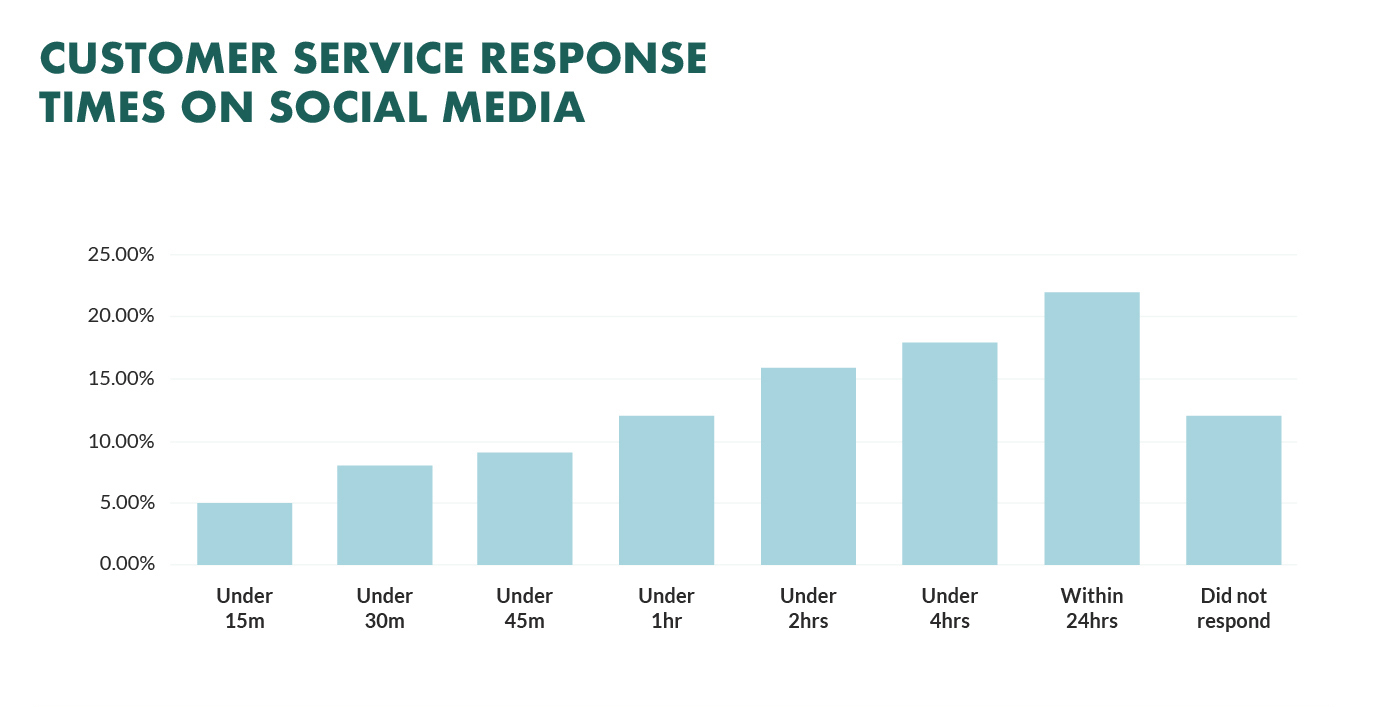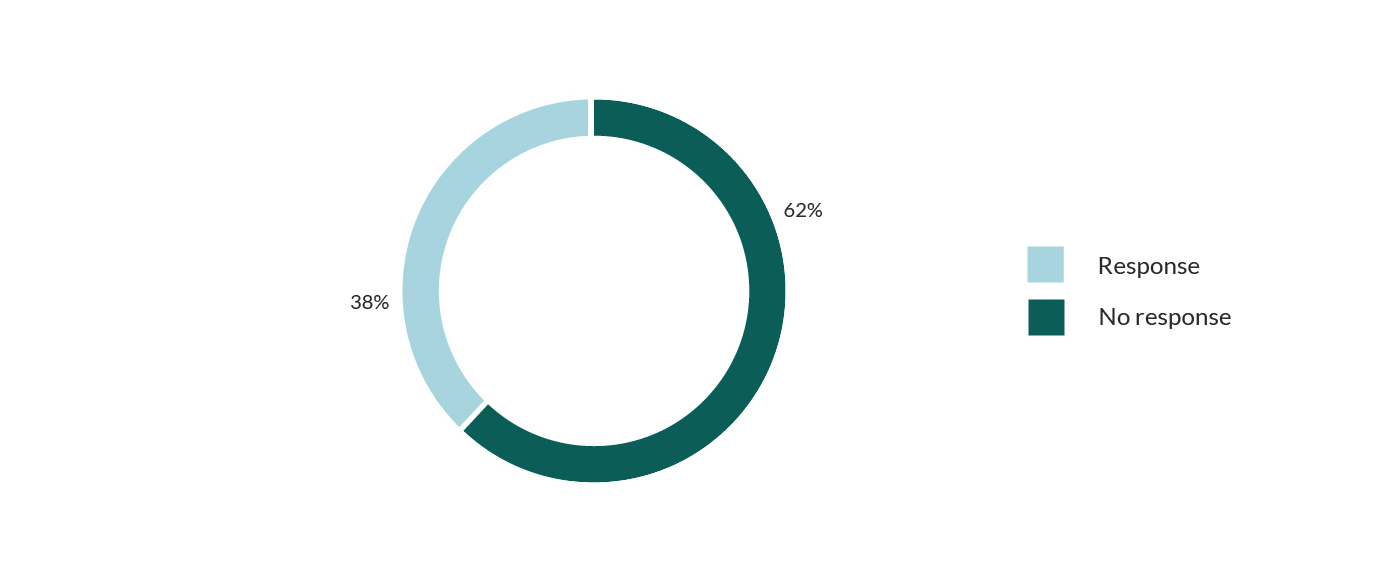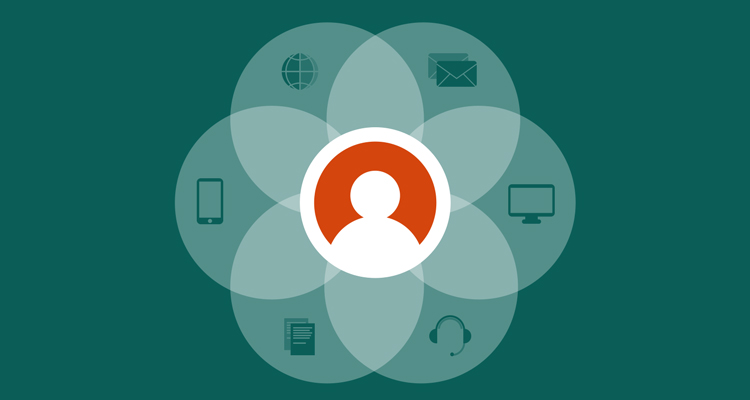The way that companies handle customer service has changed dramatically in recent years.
More than a decade ago there were only two ways to contact a company – by phone or by a fax machine.
Today, there’s a wide range of options that your disposal, including phone, email, live chat, SMS, and social media.
Yet, together with the advantage of being all-around accessible, companies now face a real challenge of delivering a consistent and an integrated customer service quality.
According to the Aberdeen Group, companies that provide a consistent service quality across multiple channels tend to retain 89% of their customers, whereas companies that do not offer a consistent quality are only able to retain 33%.
Offering a consistent customer service quality across multiple channels will significantly impact a company’s revenue, which is why more businesses are now investing in omni-channel customer service.
What is omni-channel customer service?
Omni-channel customer service integrates text, social, email and instant messaging to provide a unified brand experience so that a customer can switch between multiple channels yet still experience quality of service.
Omni-channel customer support gives you an opportunity to serve your clients in a variety of ways that are not only convenient and effective, but boost your brand’s image and credibility.
And when you look at stats like Accenture’s finding that 89% of consumers experience frustration at having to repeat their questions to multiple customer service reps, you see the value in perfecting omni-channel integration.
Omni-channel customer service best practices
In this article, we share 5 best practice tips for improving your omni-channel customer service experience.
Let’s dive right in!
1. People expect good mobile services
More people are searching for information and buying goods or services on mobile devices than ever before. Therefore, it only makes sense that they’re also seeking customer service support on their mobile phones.
Unfortunately, businesses aren’t keeping up with customer expectations as 90% of customers say their customer service experience on a mobile phone was negative. The same study found that 52% of customers say that a poor mobile experience makes them less inclined to do business with a company.
As a result, companies that haven’t optimized their websites for mobile use are losing out to companies who have.
Bottom line: make sure your customer support pages are mobile-friendly.
2. Improve your social media response times
Social media can be a great customer service tool, resulting in high customer satisfaction rates. However, many brands fail to understand customers’ expectations when it comes to providing customer service through social media channels.
There’s a gap between when customers expect an answer after initiating contact and when businesses are actually responding.
More than 30% of clients want an answer within 30 minutes and 57% of these clients expect the same turnaround time even at nights and on weekends.
Yet, the percentage of businesses who respond within the expected 30 minutes time frame is only 8%. And a full 12% of businesses don’t respond to customer messages on social media at all!

If you ignore social media communications from your clients or fail to prioritize response times, you can expect increased churn rates of up to 15% due to customer frustration.
According to a survey by NM Incite, slow responses are regarded even more negatively by customers than when a business doesn’t respond at all.
That’s why increasing speed doesn’t only reduce churn, but also results in an overall positive experience for the customer. Twitter’s own customer service study looked at how airlines were responding to clients and found that a response to a tweet that came in under 6 minutes resulted in a client being willing to pay almost £14 more!
Reducing response times on social media and training employees to provide quick and effective solutions can significantly improve your customer relationships.
3. Self-service is the new customer service
More and more customers expect businesses to make it easy for them to solve their customer service issues themselves.
Being able to look up an answer and fix the problem on their own, without having to contact a customer service representative is really convenient. In fact, nearly three quarters of consumers prefer to use a business’ website to find a solution vs. other service channels.
There are lots of ways to help customers find solutions on their own, with a comprehensive FAQs page being the most widely used self-service channel.
Even if customers can’t find the answer themselves and need to contact a representative, the availability of reliable information helps facilitate the customer experience.
A well-designed, comprehensive FAQ page, will help you reduce 2 main things:
- the amount of time it takes a customer service agent to solve a problem, and
- the number of times a customer needs to contact customer service.
Result – higher customer satisfaction and lower overall costs for the company.
4. Live chat can improve sales
Live chat is a very popular form of customer service with 63% of visitors being more likely to revisit a site that offers a live chat. And 44% of consumers report that being able to get answers to their questions during a purchase is one of the most important features a website should offer.
The ability to access help quickly and conveniently alleviates customer frustration. In fact, no hold times and convenience were slated as the top two reasons customers prefer live chat in a survey by Software Advice.
Besides being an effective channel for customer service, live chat can improve sales. As customer support agents walk clients through a particular issue, they may be able to identify products or services that would be useful to them.
So, not only does live chat benefit your business by reducing bounce rates, it also helps customer service reps upsell to clients.
Professional customer service agents with extensive knowledge of the brand’s products and services can use live chat to create a positive customer experience and boost sales.
5. Email is still a customer service leader
Email still works, and it works very well.
In fact, email wins hand-down as being the most effective way to communicate, as 38% of consumers prefer communicating via email about simple customer service issues.
In addition, email gives businesses the opportunity to offer branded messages and is a secure platform that customers trust.
Businesses should be also aware that the expectation of a fast reply still applies to email. However, as our customer service benchmark report found, 62% of companies do not respond to customer service emails!

Always answer customers when a customer tries to contact you. If you don’t respond, they are likely to spend their hard-earned money elsewhere. And if you cannot answer the question right away, at least inform the customer that you are working on it and let them know when they can expect a reply.
Try it yourself
An incredible number of businesses that spend time and money building their omni-channel service fail to take the last step – testing it out.
Oftentimes, the customer service software you use to create your omni-channel experience will let you know which areas are performing well and which areas need some improvement – giving you a solid overall picture.
However, there’s nothing like initiating a live chat or posting a tweet and waiting to assess the speed and quality of the response, as well as discover if things are running smoothly or not.
Conclusion
Omni-channel customer service is an effective solution for forward-thinking businesses.
However, don’t underestimate the human touch that ties it all together. In fact, well-trained staff that can timely address customer concerns and deliver a positive image of your brand is the key ingredient to providing top-notch customer service.
Remember – no matter which channels you choose to use in customer service, the priority is, and always will be, to provide a helpful and honest experience that will continue to grow the relationship with your customers.
Next steps
If you’re looking for a software that can help you improve the omni-channel customer service experience, then you may want to consider SuperOffice Service.
SuperOffice Service helps you to communicate with your customers via live chat, email, web-based customer portal and online forms. You can also connect and capture dialogue from most other social media channels using apps like Zapier. With our web-based customer portal, you can also provide self-service options in a mobile friendly user-interface.
All correspondence and interaction history is stored in our GDPR compliant CRM system, so whatever channel your customers use, no conversation is lost.
Try SuperOffice Service today to provide a better omni-channel customer service experience.
